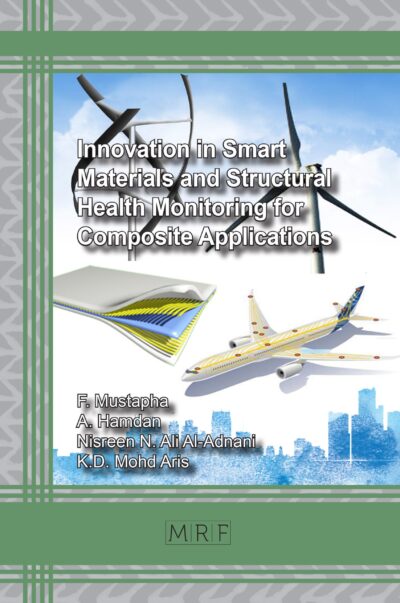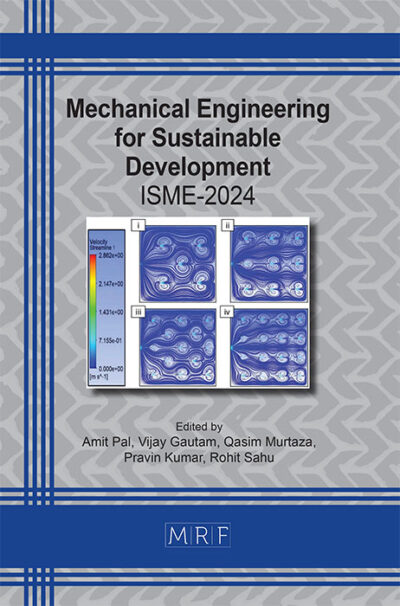Digital Methods in Developing Textile Products for People with Locomotor Disabilities
Bianca Aluculesei, Sybille Krzywinski, Antonela Curteza, Manuela Avadanei
Materials Research Foundations Vol. 110
Publication Date 2021, 144 Pages
Print ISBN 978-1-64490-154-0 (release date October 2021)
ePDF ISBN 978-1-64490-155-7
DOI: 10.21741/9781644901557
In the United States, there are 3-4 million wheelchair users, with the number steadily increasing. This book focuses upon the design of garments for wheelchair-users by considering the shape of the body while in the sitting position, the needs of the user (functionality, fashionability, ease-of-use, affordability, safety), as well as the characteristics and properties of the materials used. The book references 186 original resources and includes their direct web link for in-depth reading.
Keywords
Disabilities, Clothing for Disabled Persons, Wheelchair Users, Paraplegia, Functional Clothes, Kinematic Model, Scanning Procedure, 2D-3D/ 3D-2D Virtual Prototype, Body Posture Simulation, Virtual Pattern Making, Garment Fit Simulation
Table of contents
Introduction v
1. Disabilities: Classifications and Clothing Needs 1
1.1 Disability 1
1.1.1 Definitions and classifications 1
1.1.2 Physical disabilities 4
1.1.3 Acquired disabilities – Spinal cord injury 6
1.1.4 Types of paraplegia – body morphology and medical problems 7
1.2 Functional clothing for persons with special needs 9
1.3 Needs and demands of wheelchair-users with regard to clothing 10
1.3.1 Aesthetic demands 11
1.3.2 Functional demands 11
2. Garment Design Methods for Wheelchair-Users 14
2.1 Anthropometric measurements 14
2.1.1 Traditional measuring methods 17
2.1.2 Scanning methods 18
2.2 Measurement techniques for wheelchair-users 22
2.2.1 Traditional method 22
2.2.2 Three-dimensional scanning procedure 25
2.2.3 Kinematic body-model 27
2.3 Computer-aided design systems 35
2.3.1 2D-3D virtual prototyping of garments 36
2.3.2 3D-2D virtual prototyping of garments 37
2.3.3 Conventional garment construction for wheelchair users 38
2.3.4 3D virtual prototyping of garments for wheelchair-users 39
3. Proposed Methodology for Body-Scanning 44
3.1 Three-dimensional scanning procedure 45
3.1.1 Scanners 46
3.1.2 Scanning procedure for the standing position 48
3.1.3 Scanning procedure for the sitting position 53
3.1.4 Scanning procedure for a wheelchair-user 65
3.2 Body-posture animation using a kinematic template model 69
3.2.1 Adaptation of the kinematic template model to scan data 70
3.2.2 Animation of the kinematic model to obtain various positions of the lower body 73
3.2.3 Body-posture simulation using scan data obtained using the ViALUX BodyLux®. zSnapper® 74
3.2.4 Comparison between kinematic body-model and scan data 77
4. Virtual pattern-making for wheelchair-users 82
4.1 3D-to-2D virtual prototyping 83
4.1.1 The construction of tight-fitting pants on a defined body position 87
4.1.2 Fit simulation for the tight-fitting pants model 92
4.2 2D-3D virtual prototyping 101
4.2.1 The construction of basic pants patterns and fit simulation 101
4.2.2 Modification of the basic pants patterns 103
4.2.3 Fit simulation of the modified basic pants 109
4.3 Designing a pair of pants for a wheelchair-user 110
Conclusions 118
References 119
Abbreviations 135
About the Authors 136














